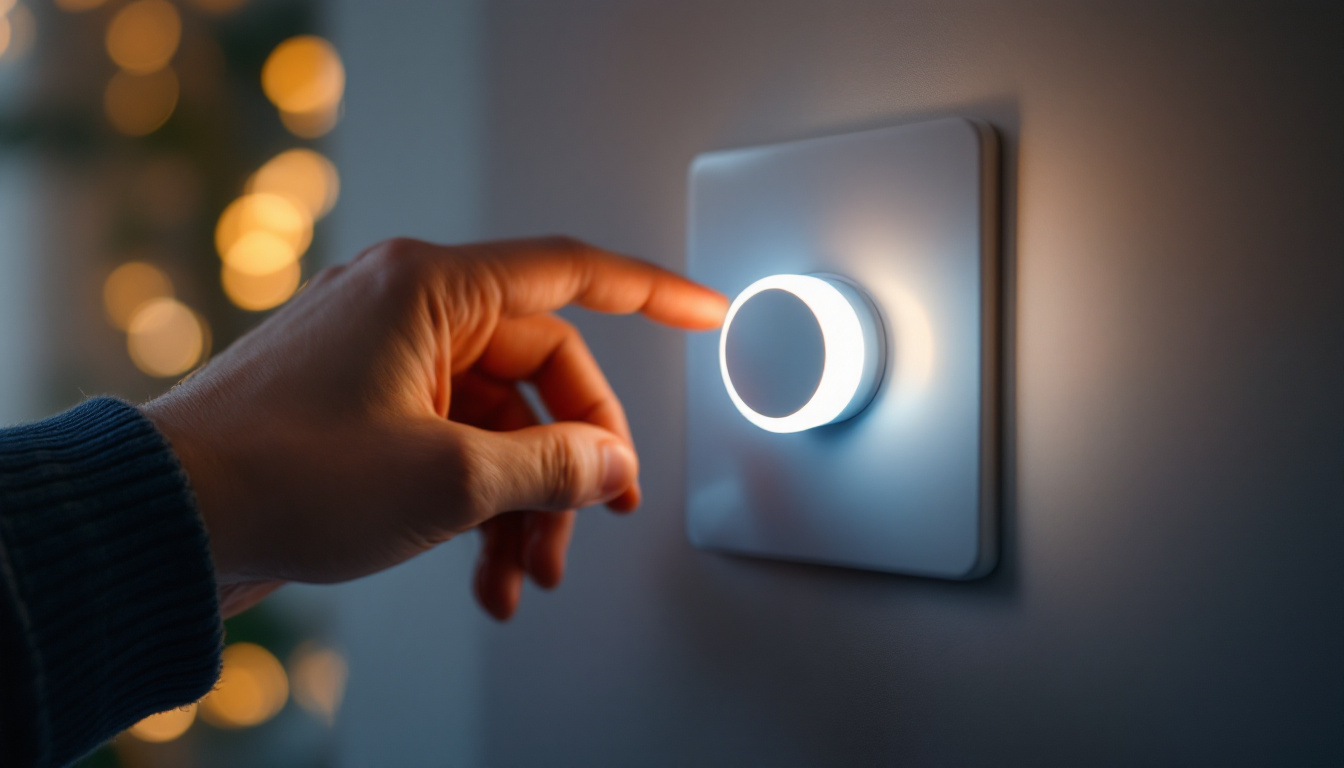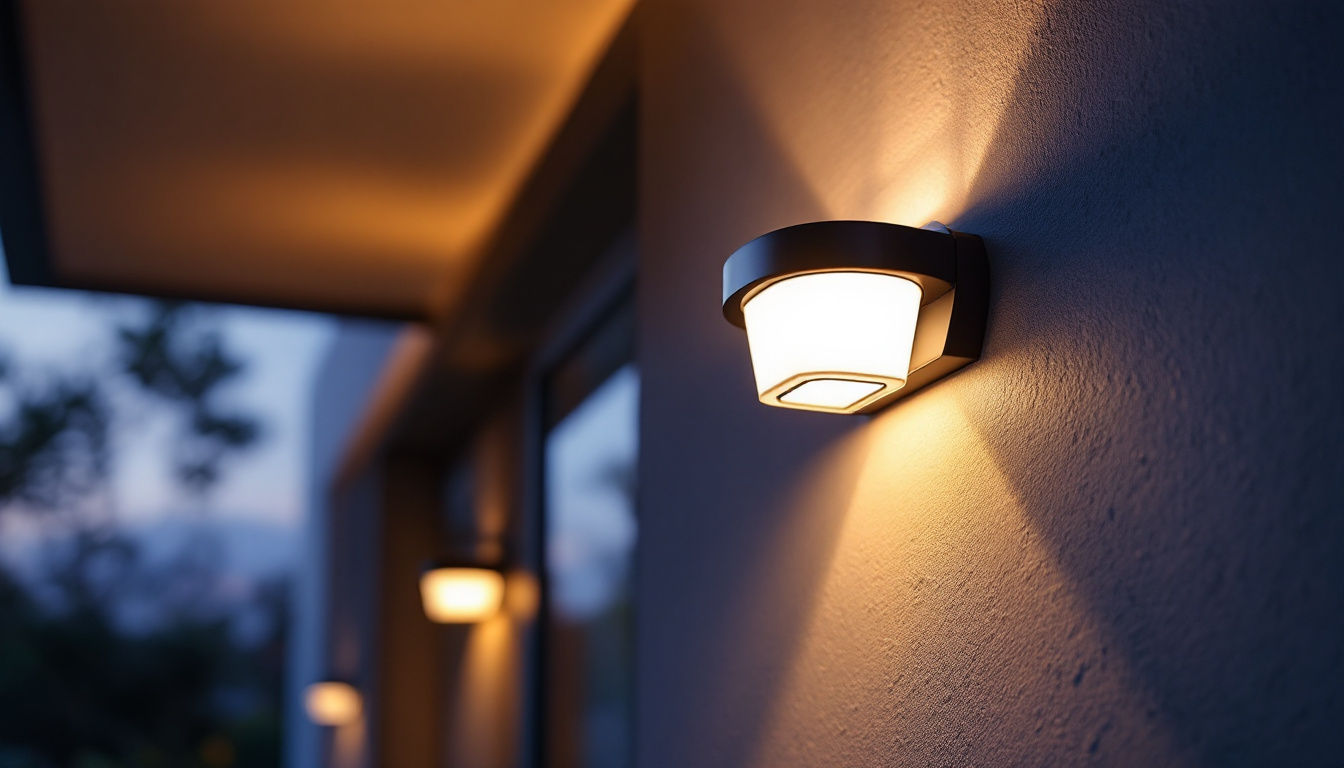

In the world of modern lighting, LED technology has revolutionized the way we illuminate spaces. For lighting contractors, understanding the intricacies of LED light dimmer switches is essential for delivering optimal solutions to clients. This article delves into the science behind LED dimming, the types of dimmers available, and best practices for installation and troubleshooting.
Before delving into dimmer switches, it is crucial to understand the basic principles of LED technology. Light Emitting Diodes (LEDs) operate differently than traditional incandescent bulbs. They use a semiconductor to convert electricity into light, which leads to significant energy efficiency and longevity.
Unlike incandescent bulbs that produce light by heating a filament, LEDs emit light through electroluminescence. This fundamental difference affects how LEDs interact with dimming devices, making it essential for contractors to grasp these concepts for effective installations.
LEDs generate light when an electric current passes through a semiconductor material, causing it to emit photons. The color of the light produced depends on the materials used in the semiconductor. This characteristic allows for a wide range of color temperatures, from warm whites to cool blues, catering to various design preferences.
Moreover, LEDs are inherently directional, meaning they emit light in a specific direction, which enhances their efficiency in applications where focused lighting is required. This property also influences how dimming functions are implemented in LED systems. For instance, in track lighting or recessed fixtures, the directed light can create dramatic effects, highlighting architectural features or artwork without the need for additional fixtures. The ability to control the intensity and direction of light makes LEDs a versatile choice for both residential and commercial spaces.
One of the most significant advantages of LED technology is its energy efficiency. LEDs consume significantly less power than traditional lighting options, which translates to lower energy bills for consumers. Additionally, they have a longer lifespan, often lasting tens of thousands of hours compared to the mere thousand hours of incandescent bulbs.
This longevity not only reduces replacement costs but also minimizes waste, making LEDs an environmentally friendly choice. Understanding these benefits can help lighting contractors advocate for LED solutions to their clients effectively. Furthermore, as technology advances, newer LED models are being developed with even greater efficiency and improved color rendering capabilities, making them suitable for a wider range of applications. The integration of smart technology into LED systems also allows for enhanced control over lighting environments, enabling users to adjust brightness and color temperature seamlessly through mobile devices or voice commands, thus further enhancing the user experience and energy savings.
Dimming LEDs involves reducing the amount of power supplied to the light source, which can be achieved through various methods. However, the unique characteristics of LEDs mean that not all dimming techniques are effective or compatible with every LED fixture.
For lighting contractors, understanding the science behind dimming is crucial for selecting the appropriate dimmer switches and ensuring optimal performance. This section explores the different dimming methods and their implications for LED systems.
There are two primary types of dimming methods used with LED lights: leading edge and trailing edge. Leading edge dimmers, often referred to as phase-cut dimmers, work by cutting off the beginning of the AC waveform. This method is commonly used with incandescent bulbs but can cause flickering and compatibility issues with LEDs.
Trailing edge dimmers, on the other hand, cut off the end of the AC waveform. This method is generally more compatible with LED technology, providing smoother dimming and reducing the risk of flickering. For lighting contractors, recommending trailing edge dimmers can lead to better performance and customer satisfaction. Additionally, trailing edge dimmers often have a wider range of dimming capabilities, allowing for more nuanced control over lighting levels, which is especially beneficial in environments where ambiance is key, such as restaurants or theaters.
Another critical distinction in LED dimming is between constant current and constant voltage systems. Constant current dimming maintains a consistent current flow to the LED, adjusting the voltage as needed. This method is often used in applications where precise control over light output is necessary.
Conversely, constant voltage dimming maintains a steady voltage while allowing the current to vary. This approach is more common in residential applications where simplicity and ease of use are prioritized. Understanding these differences enables contractors to choose the right dimming method based on the specific needs of a project. Moreover, the choice between constant current and constant voltage can significantly impact energy efficiency and overall system longevity. For instance, constant current systems can enhance the lifespan of LEDs by preventing overcurrent situations, while constant voltage systems are often easier to integrate into existing electrical infrastructures, making them a popular choice for retrofitting older buildings with modern lighting solutions.
Choosing the right dimmer switch is crucial for ensuring compatibility and optimal performance of LED fixtures. There are several types of LED dimmer switches available in the market, each with its unique features and benefits. This section provides an overview of the most common types of LED dimmer switches.
Universal dimmers are designed to work with a variety of lighting technologies, including LEDs, incandescent, and CFLs. This versatility makes them an excellent choice for contractors working on mixed lighting projects. However, it is essential to verify that the specific universal dimmer is rated for use with the particular LED fixtures being installed.
While universal dimmers offer flexibility, they may not provide the same level of performance as dedicated LED dimmers. Therefore, contractors should consider the specific requirements of the lighting design before opting for a universal solution. Additionally, it’s worth noting that some universal dimmers may have limitations in terms of the minimum load required for proper functionality, which can lead to issues when used with low-wattage LED bulbs. Understanding these nuances can help in selecting the most appropriate dimmer for a given project.
LED-specific dimmers are engineered explicitly for use with LED lighting systems. These dimmers are optimized to handle the electrical characteristics of LEDs, ensuring smooth dimming without flickering or buzzing. For contractors, recommending LED-specific dimmers can significantly enhance the user experience and overall satisfaction with the lighting solution.
Additionally, many LED dimmers come with advanced features, such as preset lighting levels and remote control capabilities, providing added convenience for end-users. Understanding these features can help contractors tailor solutions to meet the needs of their clients. Furthermore, some LED-specific dimmers are designed with energy efficiency in mind, allowing users to save on electricity bills while enjoying the benefits of customizable lighting. This aspect not only appeals to environmentally conscious consumers but also aligns with the growing trend towards sustainable living.
With the rise of smart home technology, smart dimmers have gained popularity among consumers. These dimmers can be controlled via smartphone apps, voice commands, or home automation systems, offering unparalleled convenience and flexibility.
For lighting contractors, integrating smart dimmers into projects can enhance the overall appeal of the lighting design. However, it is essential to ensure that the chosen smart dimmer is compatible with the LED fixtures and any existing smart home systems. This compatibility is crucial for seamless operation and user satisfaction. Moreover, many smart dimmers offer features such as scheduling and scene setting, allowing users to create specific lighting atmospheres for different times of day or activities. This level of customization not only elevates the user experience but can also be a selling point for contractors looking to differentiate their services in a competitive market. As smart technology continues to evolve, staying informed about the latest advancements in smart dimming solutions will be essential for professionals in the lighting industry.
Proper installation of LED dimmer switches is vital for ensuring optimal performance and longevity of the lighting system. This section outlines best practices that lighting contractors should follow during installation.
Before installation, it is essential to understand the load requirements of the LED fixtures being used. Each dimmer switch has a specific load rating, and exceeding this rating can lead to performance issues or even damage to the dimmer or fixtures. Contractors should always check the specifications of both the dimmer and the LED lights to ensure compatibility.
Additionally, it is crucial to consider the total wattage of all connected fixtures. Proper calculations will help in selecting the right dimmer and avoiding potential problems down the line.
Wiring is another critical aspect of LED dimmer installation. Ensuring that the wiring is appropriate for the specific dimmer and fixtures is essential for safe and effective operation. Contractors should follow local electrical codes and guidelines when performing installations.
Using high-quality wiring and connectors can also enhance the reliability of the installation. Poor connections can lead to flickering, buzzing, and other performance issues that can frustrate end-users.
After installation, thorough testing is essential to ensure that the dimmer switch and LED fixtures are functioning correctly. Contractors should check for smooth dimming across the entire range and listen for any unusual sounds, such as buzzing or humming, which may indicate compatibility issues.
If problems arise, troubleshooting is key. Common issues include flickering, insufficient dimming range, or failure to turn on. Understanding the potential causes of these problems can help contractors address them quickly and efficiently, ensuring customer satisfaction.
Understanding the science behind LED light dimmer switches is essential for lighting contractors aiming to provide the best solutions for their clients. By grasping the fundamentals of LED technology, the various types of dimmers available, and best practices for installation, contractors can enhance their expertise and deliver exceptional lighting solutions.
As the demand for energy-efficient and customizable lighting solutions continues to grow, staying informed about advancements in LED dimming technology will be crucial for success in the lighting industry. By embracing this knowledge, contractors can position themselves as trusted experts, ready to meet the evolving needs of their clients.
Ready to elevate your lighting projects with the latest LED dimmer switches and state-of-the-art solutions? At LumenWholesale, we provide lighting contractors like you with the highest quality, spec-grade lighting products at prices that can’t be beaten. Say goodbye to unnecessary markups and hello to a vast selection of reliable, high-performance lighting that meets the most rigorous industry standards. With the added benefits of free shipping on bulk orders, LumenWholesale is your go-to source for premium lighting at the best value. Don’t compromise on quality or cost—visit LumenWholesale today and discover the ideal blend of quality, affordability, and convenience for all your lighting needs.

Discover innovative strategies from expert lighting contractors on harnessing solar power for outdoor illumination.

Discover the essential insights lighting contractors need about solar path lights.

Discover the essential factors lighting contractors need to consider when selecting high pressure sodium lamps.

Discover how solar exterior sconces can be a game-changer for lighting contractors looking to win more bids.
Get notified when NEW deals are released.
Optimize your budget with wholesale discounts.
Only top-quality, specification-grade lighting products.
No additional costs at checkout - what you see is what you pay.
We understand the unique needs of contractors.